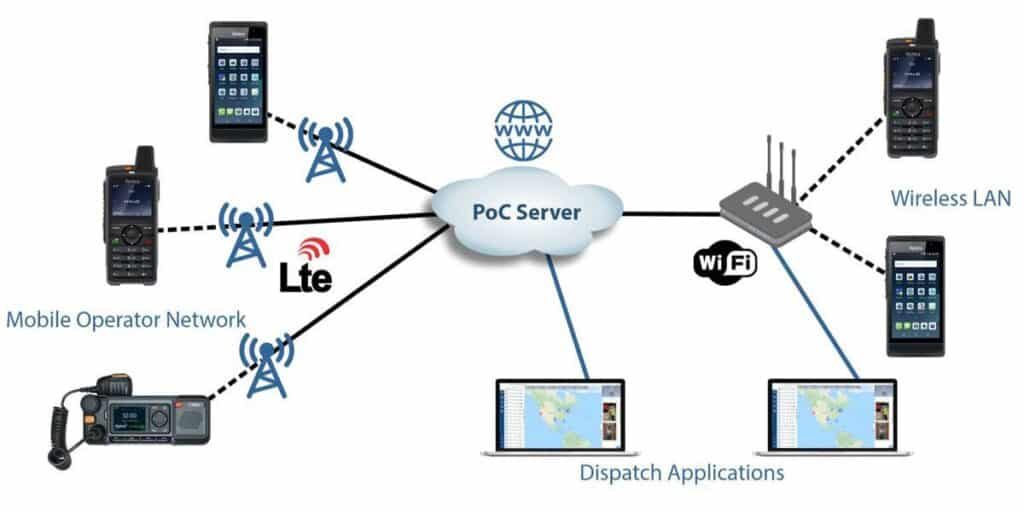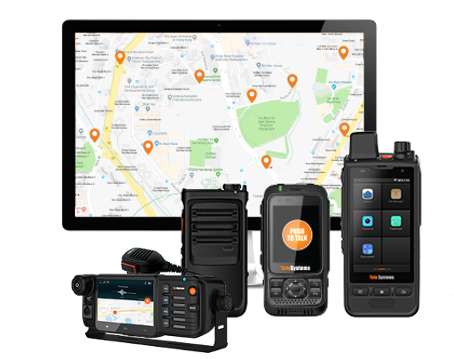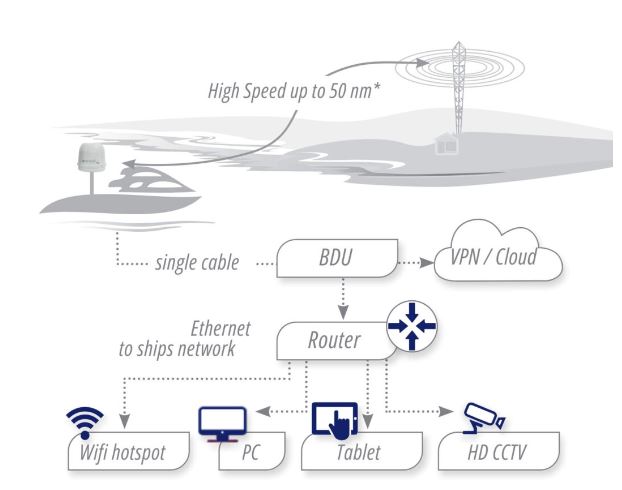In today’s fast-paced world, communication is key. And for industries that require reliable and instant communication, Push-to-Talk (PTT) technology has long been the go-to solution. But what if there was a more efficient and flexible alternative? That’s where Push-over-Cellular (PoC) technology comes into play.
In this blog post, we aim to provide you with an in-depth understanding of PoC technology – an innovative communication solution that is changing the game for businesses across various sectors. We will explore the features and benefits of PoC, while comparing it to the traditional PTT technology, so that you can make an informed decision for your organization.
So, whether you’re a field service technician, a security professional, or simply someone looking to upgrade their communication system, join us as we delve into the world of Push-over-Cellular technology, and discover why it’s the future of instant communication.
What is PoC
PoC (Push-to-Talk over Cellular) technology is a communication system that enables instant voice communication over cellular networks. It combines the convenience and coverage of cellular networks with the simplicity and reliability of traditional push-to-talk (PTT) radio systems. PoC allows users to communicate with each other by simply pressing a button, similar to a walkie-talkie, but using cellular networks instead of radio frequencies.
Unlike traditional two-way radios that rely on limited-range radio signals, PoC leverages the widespread availability of cellular networks to enable communication over broader geographic areas. It utilizes existing 3G, 4G, or 5G mobile data networks, enabling users to communicate over long distances where cellular coverage is available.
PoC technology offers several advantages over conventional radio systems, such as instant communication, wide coverage, group communication capabilities, multimedia integration, and scalability. It is widely used in industries that require efficient and effective communication, including public safety, security, logistics, transportation, construction, event management, and utilities.
By leveraging the capabilities of smartphones or specialized PoC devices, users can benefit from additional features like text messaging, multimedia sharing, and location tracking. PoC also allows for centralized management and control of user groups and communication channels, making it well-suited for organizations that require efficient coordination and collaboration.

PoC technology features
PoC (Push-to-Talk over Cellular) technology has several key features that contribute to its popularity and functionality. Some of the prominent features of PoC technology are:
- Instant Communication: PoC enables instant communication over cellular networks, providing near real-time voice communication between users. With just a push of a button, users can quickly establish a voice connection without the need to dial or establish a phone call.
- Wide Coverage: PoC technology utilizes cellular networks, offering wide coverage that extends beyond traditional radio coverage areas. Users can communicate with each other even over long distances as long as there is cellular network coverage, making it particularly valuable for operations spanning large geographical areas.
- Group Communication: PoC supports group communication, allowing multiple users to be part of a conversation simultaneously. This feature makes it effective for team collaboration, coordination, and dispatching purposes. Users can communicate with an entire group with a single push-to-talk action, enhancing efficiency and reducing the need for individual calls.
- Scalability and Flexibility: PoC technology can be easily scaled to accommodate various organizational needs and can be integrated with other communication systems. It offers flexibility in terms of device compatibility, as it can be used on various smartphones, tablets, or dedicated PoC devices, making it accessible to a wider range of users.
- Centralized Management: PoC solutions often come with centralized management platforms that allow administrators to efficiently manage user groups, access permissions, and communication channels. This centralized control simplifies administration and enhances security within the PoC system.
Benefits of (PoC) compared To Traditional PTT
Push-to-Talk over Cellular (PoC) offers several benefits compared to traditional Push-to-Talk (PTT) systems. Here are some advantages of PoC:
- Cost-Effectiveness: PoC eliminates the need for expensive dedicated radio infrastructure and licenses since it operates over existing cellular networks. This significantly reduces infrastructure costs, making it a more cost-effective solution for organizations.
- Group Communication: PoC enables instant group communication, allowing users to create predefined talk groups for different teams or departments. This simplifies coordination and ensures that critical information reaches the relevant individuals or teams simultaneously.
- Increased Efficiency: With PoC, communication is instant and does not require dialing numbers or waiting for connections. It enables quick and efficient communication with the push of a button, leading to improved response times and streamlined workflows.
- Better Voice Quality: PoC leverages advanced voice codecs and cellular network technologies, resulting in superior voice quality compared to traditional analog radio systems. This ensures clear and reliable communication even in challenging environments.
- Enhanced Features: PoC systems often offer additional features such as text messaging, presence indicators, call recording, and location tracking. These features contribute to improved communication, collaboration, and overall efficiency.
Summary
Push-over-Cellular (PoC) technology is a communication system that combines the convenience and coverage of cellular networks with the simplicity and reliability of traditional push-to-talk (PTT) radio systems. It offers superior voice quality, enhanced features, and wide coverage. PoC enables instant communication, group communication, and scalable solutions. It is cost-effective, efficient, and well-suited for industries that require reliable and instant communication. With its additional features and centralized management, PoC technology revolutionizes communication in organizations by providing a flexible, reliable, and feature-rich solution that combines the convenience of cellular networks with the simplicity of push-to-talk communication. Overall, PoC is the future of instant communication.





























